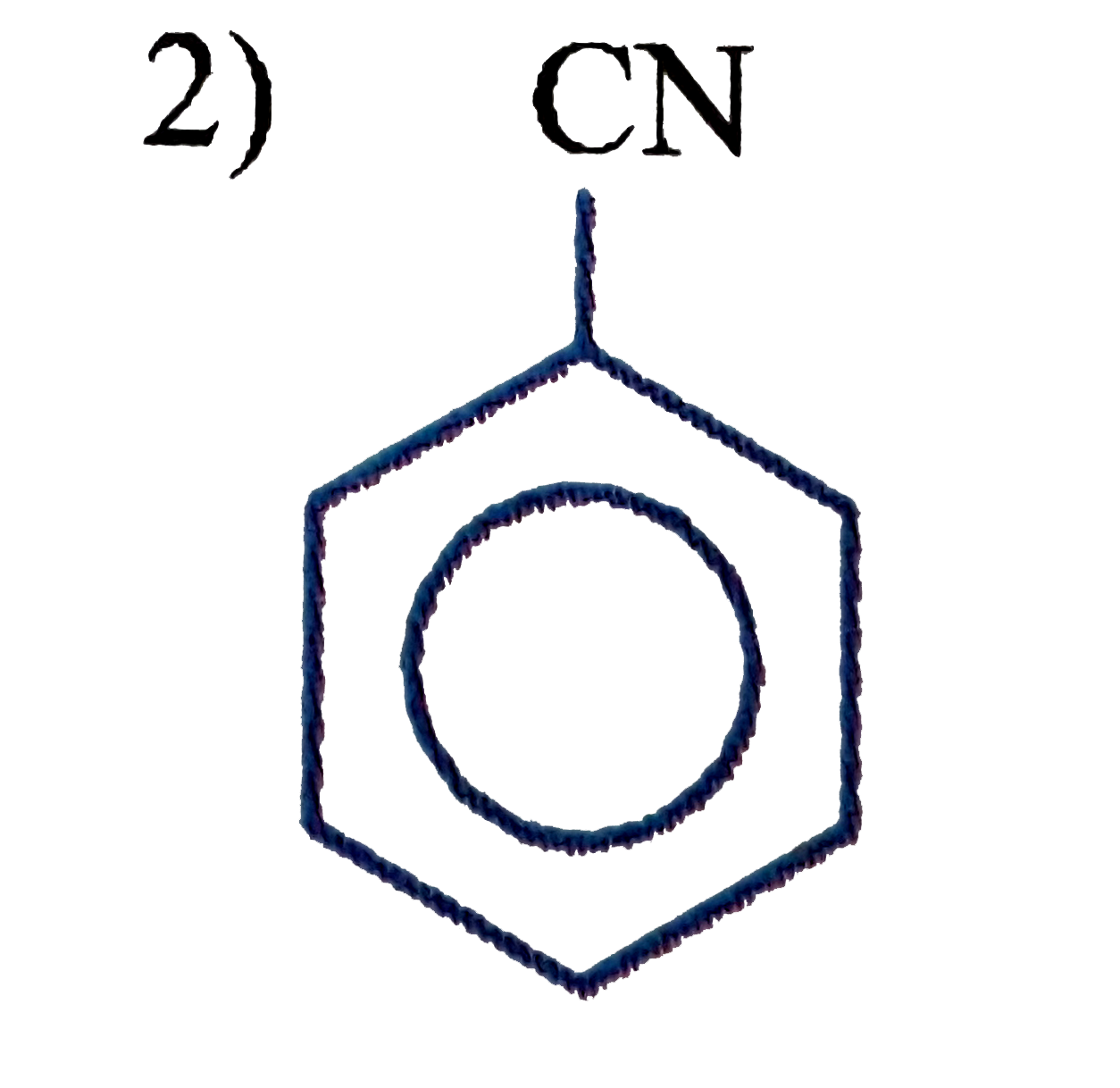Simplest alkene (A) reacts with HCl to form compound (B).Conmpound (B) reacts with ammonia to form compound (C) of molecular formula C2H7N. Conpound (C) undergoes carbylamine test. Identify (A). (B), and (C).

(i) The simplest alkene (A) is CH2=CH2, ethene.
(ii) Ethene reacts with HCl to give Chloroethane CH3−CH2Cl as (B) by addition reaction.
CH2=CH2+HCl→CH3−CH2ClChloroethane (B)
(iii) Chloroethane reacts with ammonia to give Ethylamine CH3−CH2 NH2 as (C ). It is a primary amine and Carbylamine test is the characteristic test for 1∘ amine.
CH3−CH2Cl+NH3→CH3−CH2NH2Ethyl amine (or) Aminocthane+HCl

Topper's Solved these Questions
- HALOALKANES AND HALOARENESBOOK - FULL MARKSCHAPTER - HALOALKANES AND HALOARENESEXERCISE - Evaluate Yourself
8 Videos
- HALOALKANES AND HALOARENESBOOK - FULL MARKSCHAPTER - HALOALKANES AND HALOARENESEXERCISE - Additional Questions Solved (Choose the correct answer)
29 Videos
- HALOALKANES AND HALOARENESBOOK - FULL MARKSCHAPTER - HALOALKANES AND HALOARENESEXERCISE - Additional Questions Solved (5-Marks Questions)
15 Videos
- FUNDAMENTALS OF ORGANIC CHEMISTRY BOOK - FULL MARKSCHAPTER - FUNDAMENTALS OF ORGANIC CHEMISTRY EXERCISE - Additional Questions Solved (5-Marks Questions)
15 Videos
- HYDROCARBONSBOOK - FULL MARKSCHAPTER - HYDROCARBONSEXERCISE - Additional Question Solved (5 mark question )
15 Videos
Similar Questions
An aromatic compound (A) on treatment with aqueous ammonia and heating forms compound (B) which on heating with Br2 and KOH forms a compound (C ) of the molecular formula C6H7N. Write the structures and IUPAC names of compounds (A) . (B) and (C ).
View SolutionAn aromatic compound (A) on treatment with aqueous ammonia and heating forms compound (B) which on heating with Br2 and KOH froms a compound (C ) of the molecular formula C6H7N. Write the structures and IUPAC names of compounds (A) . (B) and (C ).
View Solution
Knowledge Check
An aromatic compound 'A' on treatment with aqueous ammonia and heating forms compounds 'B' which on heating with Br2 and KOH forms a compound 'C' of molecular formula C6H7N.
The conversion of B to C isAHoffmann bromamide degradation reactionBBromoform reactionCWurtz fitting reactionDHoffmann mustard oil reactionAn aromatic compound 'A' on treatment with aqueous ammonia and heating forms compounds 'B' which on heating with Br2 and KOH forms a compound 'C' of molecular formula C6H7N.
The compound 'B' isA B
B C
C D
D
An acid (A) reacts with PCl5 to form compound (B).'A' also reacts with NaOH to form a compound (C).Both (B) and (C) react together and form acetic anhydride. What are 'A' 'B' and 'C'.
View SolutionAn aromatic compound (A) on treatment with ammonia followed by heating forms compound (B), which on heating with Br2 and KOH forms a compound (C) having molecular formula C6H7N. Give the structures of A, B and C and write the reactions involved.
View SolutionAn aromatic compound 'A' on treatment with aqueous ammonia and heating forms compound 'B' which on heating with Br2 and KOH forms a compound 'C' of molecular formula C6H7N. Write the structures and IUPAC names of compounds A, B and C.
View SolutionAn aromatic compound 'A' on treatment with aqueous ammonia and heating forms compound 'B' which on heating with Br2 and KOH forms a compound 'C' of molecular formula C6H7N. Write the structures and IUPAC names of compounds A,B and C.
View SolutionAn aromatic compound 'A' on treatment with aqueous ammonia and heating forms compound 'B' which on heating with Br2 and KOH forms a compound 'C' of molecular formula C6H7N. Write the structures and IUPAC names of compounds A,B and C.
View SolutionAn aromatic compound 'A' on treatment with aqueous ammonia and heating forms compound 'B' which on heating with Br2 and KOH forms a compound 'C' of molecular formula C6H7N. Write the structures and IUPAC names of compounds A,B and C.
View Solution
